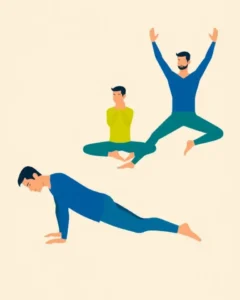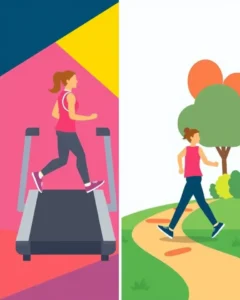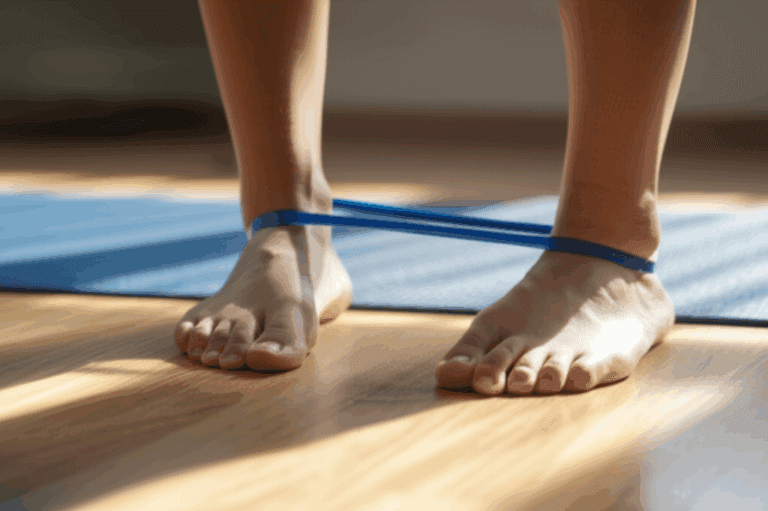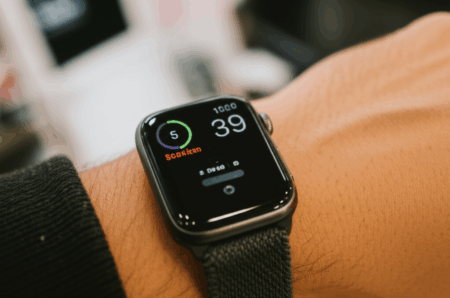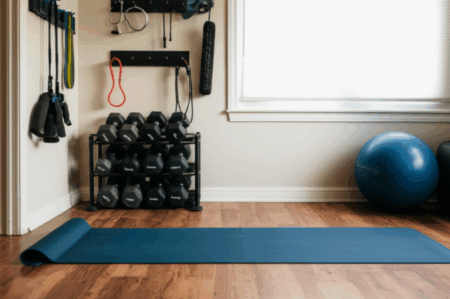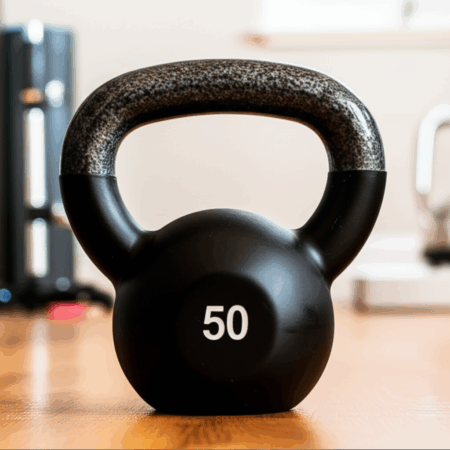Transforming your home into a fitness haven doesn’t require a massive budget. In fact, a few well-chosen, affordable pieces of equipment can significantly enhance your workouts without breaking the bank. If you’re looking to upgrade your home fitness routine for under $10, you’re in luck! This guide explores several budget-friendly options that can help you achieve your fitness goals.
Why Build a Budget Home Gym?
- Cost-Effective: Gym memberships and expensive equipment can be a financial burden. Building a home gym with affordable items eliminates these ongoing costs.
- Convenience: Workout anytime, without the commute or waiting for equipment. A home gym fits into your schedule, no matter how busy you are.
- Privacy: Some people feel more comfortable working out in the privacy of their own homes, away from the crowds and distractions of a public gym.
- Personalization: Tailor your workout space to your specific needs and preferences. Choose the equipment and setup that works best for you.
- No Intimidation: Gyms can sometimes feel intimidating, especially for beginners. A home gym provides a judgment-free zone to explore fitness.
Top Fitness Finds Under $10
1. Resistance Bands: Your Portable Gym
- Versatility: Resistance bands are incredibly versatile, allowing you to perform a wide range of exercises targeting different muscle groups. From bicep curls and chest presses to squats and leg extensions, the possibilities are almost limitless. (SparkPeople)
- Adaptability: Suitable for all fitness levels, resistance bands come in varying resistance levels, allowing you to adjust the intensity of your workout as you get stronger. (SparkPeople)
- Portability: Lightweight and compact, resistance bands are easy to transport, making them perfect for travel or workouts on the go. (Best Health Magazine)
- Cost-Effective: Resistance bands are one of the most affordable pieces of fitness equipment, often available for under $10. (CNET)
- Full Body Workout: A resistance band workout can target the upper and lower body, core, and more. (CNET)
“They are multi-functional, easy to transport and cost efficient,” says Kristin Galer, personal trainer and owner of Kay G Training in Toronto. How can you afford not to have these versatile tools in your fitness toolbag? “The variety of resistance exercises one can perform is almost limitless.” – Best Health Magazine
How to Use Resistance Bands:
- Warm-up: Use lighter resistance bands for dynamic stretching and joint mobilization.
- Strength Training: Incorporate resistance bands into your regular strength training routine to add intensity and challenge your muscles.
- Rehabilitation: Use resistance bands for low-impact exercises to aid in injury recovery and improve mobility.
- Assisted Exercises: Use resistance bands to assist with exercises like pull-ups or dips, gradually building strength.
2. Jump Rope: Cardio on a Dime
- Calorie Burning: Jumping rope is a highly effective cardio exercise that can burn more calories than running alone. (SparkPeople)
- Coordination and Agility: Jumping rope improves coordination, agility, and footwork.
- Full Body Workout: Engaging your legs, core, and arms, jumping rope provides a comprehensive full-body workout.
- Portability: Compact and lightweight, jump ropes are easy to carry and use anywhere. (SparkPeople)
- Affordable: High-quality jump ropes can be found for under $10, making them a budget-friendly cardio option. (GoFit)
- Cardiovascular Endurance: Jumping rope can increase your leg and core strength while helping you increase your cardiovascular endurance. (SparkPeople)
How to Incorporate Jump Rope into Your Routine:
- Warm-up: Use jump rope for 5-10 minutes to elevate your heart rate and prepare your muscles for exercise.
- HIIT Workouts: Incorporate jump rope into high-intensity interval training (HIIT) workouts for short bursts of intense cardio.
- Cardio Finisher: End your workout with a jump rope session to burn extra calories and improve cardiovascular fitness.
- Active Recovery: Use jump rope at a low intensity for active recovery between sets of strength training exercises.
3. Workout Sliders: Core Powerhouse
- Core Engagement: Workout sliders engage your core muscles in nearly every exercise, helping to improve stability and strength. (SparkPeople)
- Versatility: Use sliders for a variety of exercises targeting your core, arms, and legs.
- Low Impact: Sliders provide a low-impact workout, making them suitable for people with joint pain or injuries.
- Portability: Lightweight and packable, sliders are easy to take with you wherever you go. (SparkPeople)
- Affordable: A set of workout sliders can often be found for under $10. (CNET)
- Dual-Sided: Workout sliders are dual-sided, they are hardwood floor and carpet-friendly. (CNET)
Slider Exercises to Try:
- Mountain Climbers: Engage your core and increase your heart rate with this dynamic exercise.
- Pikes: Target your abs and improve flexibility with slider pikes.
- Hamstring Curls: Strengthen your hamstrings and glutes with slider hamstring curls.
- Lateral Lunges: Improve hip mobility and strengthen your legs with slider lateral lunges.
4. Ankle and Wrist Weights: Add Intensity
- Increased Resistance: Ankle and wrist weights add extra resistance to low-impact exercises like walking, Pilates, or yoga. (CNET)
- Upper and Lower Body Strengthening: Helpful in strengthening your lower and upper body. (CNET)
- Versatility: Can be used in a variety of exercises.
- Affordable: Generally inexpensive. (CNET)
How to Incorporate Ankle and Wrist Weights:
- Walking or Running: Add ankle weights to increase the intensity of your cardio workouts.
- Pilates or Yoga: Use wrist weights during arm exercises to build upper body strength.
- Bodyweight Exercises: Incorporate ankle weights into exercises like leg lifts or glute bridges to increase the challenge.
5. Exercise Ball: Core Stability and More
- Core Strengthening: Workouts atop exercise ball can strengthen your abdominal muscles, back and hips. (Cleveland Clinic Health Essentials)
- Balance and Agility: Improve your balance and agility. (Cleveland Clinic Health Essentials)
- Stretching: Great for stretching. (Cleveland Clinic Health Essentials)
- Versatile: It’s a large, round, inflatable ball that comes in different sizes. (CNET)
How to Incorporate Exercise Ball:
- Core Exercises: Use exercise ball to challenge your core with exercises like crunches, planks, and Russian twists.
- Balance Training: Improve your balance and stability by performing exercises like single-leg stands or squats on the exercise ball.
- Stretching: Use the exercise ball for stretching your back, hips, and shoulders.
- Desk Chair Alternative: If you prefer, it can be used in place of your home office chair. (CNET)
6. Hand Grips: Strength in Your Hands
- Forearm Strength: Training with hand grips will improve your forearm strength
- Good for Rehabilitation: Good for massaging tired muscles and helping you recover from injury (SparkPeople)
How to Incorporate Hand Grips:
- Rehabilitation: Great for massaging tired muscles and helping you recover from injury. (SparkPeople)
- Strength Training: Use them as a way to improve forearm strength.
Other Budget-Friendly Fitness Essentials
While the above items are all fitness equipment, you can also enhance your home workouts with a few other affordable essentials:
- Water Bottle: Staying hydrated is crucial for any workout. A reusable water bottle is an essential item to have on hand.
- Workout Clothes:
- Old Navy: The Old Navy ones can be found for like $13 during a promo and they’re almost just as good as my Lulu ones that cost 8x as much. (Reddit)
- Amazon Essentials: You can score some decent activewear for pretty cheap in the Amazon Essentials section. (Esquire)
- H&M: H&M makes dirt cheap activewear. (Esquire)
- Lululemon: Lululemon’s We Made Too Much Section is a gem. (Esquire)
- Gym Mat/Yoga Mat: Gym Mat/Yoga Mat will give you good base for a minimalist home gym setup (Orbit Fitness)
Maximizing Your Budget Workout
- Utilize Online Resources: Take advantage of free workout videos and tutorials available on YouTube, fitness blogs, and social media. (Cleveland Clinic Health Essentials)
- Get Creative with Household Items: Use items like canned goods or water bottles as weights, and chairs or stairs for step-ups and other exercises.
- Focus on Bodyweight Exercises: Bodyweight exercises like push-ups, squats, lunges, and planks are highly effective and require no equipment.
- Set Realistic Goals: Start with small, achievable goals and gradually increase the intensity and duration of your workouts as you get stronger.
- Stay Consistent: Consistency is key to achieving results. Make exercise a regular part of your routine, even if it’s just for 15-30 minutes a day.
Final Thoughts
Building a home gym doesn’t have to be expensive. With a few affordable pieces of equipment and a commitment to consistency, you can create a workout space that helps you achieve your fitness goals without breaking the bank. So, ditch the expensive gym membership and start building your budget-friendly home gym today!

